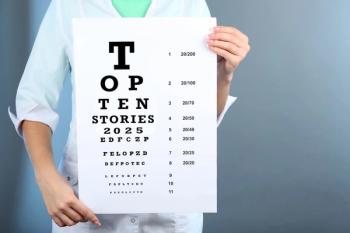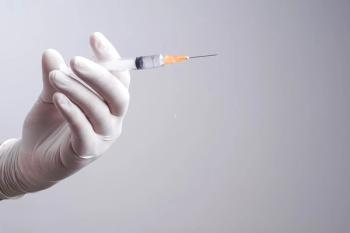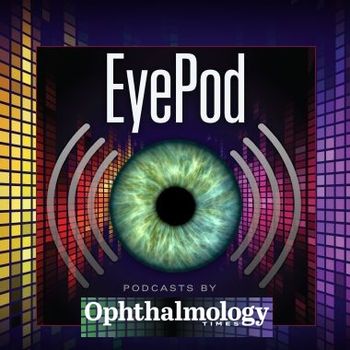
Home-monitoring device may advance diagnostics, detection of AMD
An ophthalmologist shares the clinical benefits he has experienced with a home vision-monitoring device for his patients with age-related macular degeneration.
Take-home message: An ophthalmologist shares the clinical benefits he has experienced with a home vision-monitoring device for his patients with age-related macular degeneration.
By Richard Garfinkel, MD, Special to Ophthalmology Times
Damage to the macula caused by age-related macular degeneration (AMD) can develop slowly or quickly, and the early and intermediate stages often pass without symptoms.
While a complete dilated eye examination will allow an ophthalmologist to detect the disease earlier, a patient often does not notice disease progression until central vision is significantly deteriorated.
Unfortunately, outcomes of AMD treatment are correlated to baseline visual acuity, area, and characteristics of choroidal neovascularization (CNV).1 Though new pharmaceutical treatment options have made strides in terms of maintaining patients’ vision, restoration of significant vision loss is rare.
This shifts the burden of disease management to the earliest detection of CNV, so that patients can preserve the best vision possible. While there are known risk factors, there is no true predictive model for determining who will progress from dry to wet AMD and when. A typical 6-month interval between appointments could allow an alarming amount of disease progression and visual loss.
Understanding the necessity of self-monitoring of disease by patients, the practice of providing Amsler grids to patients was made common in the 1960s. Although it has been the standard of care for more than half a decade, it has known limitations, such as perceptual completion and lack of compliance, that make the overall sensitivity of detecting macular disease less than 50%.2,3
Hyperacuity is the ability to perceive minute differences in the relative spatial localization of two objectsâa human skill that remains despite aging and cataract development.4,5,6
However, changes in retinal morphology will lead to an incorrect perception of the location of the objects. Preferential hyperacuity perimetry (PHP) assesses and records perceived shifts in object location that correlate to metamorphopsia.7
When compared with a patient’s baseline and normative data for an AMD population, it becomes an effective test for detecting the development of CNV.8
Further developments with PHP include a device (ForseeHome, Notal Vision) that patients can use from home.
In addition to the improved efficacy of PHP over the Amsler grid, the device receives real-time test results from patients and monitors their usage. By following up with patients who are not consistent with their home-vision monitoring, many of the common compliance obstacles are overcome.
The HOME Study, a subset of the AREDS2 Study, compared use of the device plus standard care with standard care alone in more than 1,500 patients with a high risk of progression to CNV.9
The interim analysis at 1.4 years into the study found sufficient advantage to the use of the device that the Data and Safety Monitoring committee recommended an early study termination. Participants in the device cohort lost a median of 4 EDTRS letters while those in the standard care group lost a median 9 letters (p = 0.021).
Clinical use
The vision-monitoring device has been used with our patients since 2011, even before the HOME study began, and our experience has mirrored the study data. We chose for the monitoring center to send our practice an e-mail alert when a patient has a sufficiently abnormal test result, and we then call the patient and get he or she into the office within 24 hours in most cases. Nearly every one of these patients responds that he or she is fine and that the machine malfunctioned.
However, we often find that the device detected the early signs of a serious problem related to CNV before there were obvious symptoms, and we are able to start treatment immediately.
The alternative arrangement for such early detection would be frequent patient examinations, which is highly impractical.
This is dramatically different than what happens when a patient is relied upon to use the Amsler grid and contact their physician when he/she experiences symptoms.
Even in the best cases, with patients who do test frequently, are able to fixate centrally, and do not experience any neurological interference, human nature is to deny that there is a problem until it is so severe that it is interfering with function.
At this point, there is a significant amount of vision loss that is unlikely to be restored completely. If we can detect progression before vision declines beyond 20/40, we can preserve our patients’ lifestyle. They do not lose the ability to drive, navigate alone, or recognize and remain connected to individuals.
When asked, patients who have lost their independence often comment they would pay anything to restore their vision. With this in mind, I do not make any attempt to determine if a patient can afford the home monitoring device or not.
As a physician, my job is to educate patients, present to them their options, and give them my professional opinion of what is best. I advise them the device is not covered by insurance presently-although the company is working toward that end-and let them know the monthly cost associated with the device. I find the majority of my eligible patients do elect to pay the cost, and find great benefit in the device.
The HOME study data show that more than 90% of patients using the PHP device as recommended are able to detect disease progression and maintain vision better than 20/40, whereas in the control group only 62% had the same chance of keeping their vision.
PHP monitors actual diagnostic signs of AMD progression that are independent from visual acuity and aids in medically managing patients effectively in a way that has not been possible previously.
References
1. Ying GS, Huang J, Maguire MG, et al. Baseline predictors for one-year visual outcomes with ranibizumabvor bevacizumab for neovascular age-related macular degeneration. Ophthalmology. 2012;120(1):122-129.
2. Crossland M, Rubin G. The Amslwer Chart: absence of evidence is not evidence of absence. Br J Ophthalmol. 2007 Mar; 91(3): 391–393.
3. Schuchard RA. Validity and interpretation of Amsler grid reports. Arch Ophthalmol. 1993 Jun; 111(6):776-80.
4. Westheimer G. The spatial sense of the eye. Proctor lecture.Invest Ophthalmol Vis Sci. 1979;18(9):893–912.
5. Enoch JM, Williams RA, Essock EA, Barricks M. Hyperacuity perimetry. Assessment of macular function through ocular opacities. Arch Ophthalmol. 1984;102(8):1164–1168.
6. Lakshminarayanan V, Aziz S, Enoch JM. Variation of the hyperacuity gap function with age. Optom Vis Sci. 1992;69(6):423–426.
7. Loewenstein A, Malach R, Goldstein M, et al. Replacing the Amsler grid: a new method for monitoring patients with age-related macular degeneration. Ophthalmology. 2003 May; 110(5):966-70.
8. Heier JS, Ip MS, Loewenstein A, et al. Preferential Hyperacuity Perimeter (PreView PHP) for detecting choroidal neovascularization study. Ophthalmology. 2005 Oct; 112(10):1758-65.
9. AREDS2-HOME Study Research Group. Randomized trial of a home monitoring system for early detection of choroidal neovascularization home monitoring of the Eye (HOME) study. Ophthalmology. 2014 Feb; 121(2):535-544.
Richard Garfinkel, MD
Dr. Garfinkel practices in Virginia, Maryland, and the District of Columbia. He also is clinical assistant professor, Georgetown University Hospital, and has a courtesy appointment at Inova Fairfax Hospital. Dr. Garfinkel did not indicate any proprietary interest in the subject matter.
Newsletter
Don’t miss out—get Ophthalmology Times updates on the latest clinical advancements and expert interviews, straight to your inbox.













































